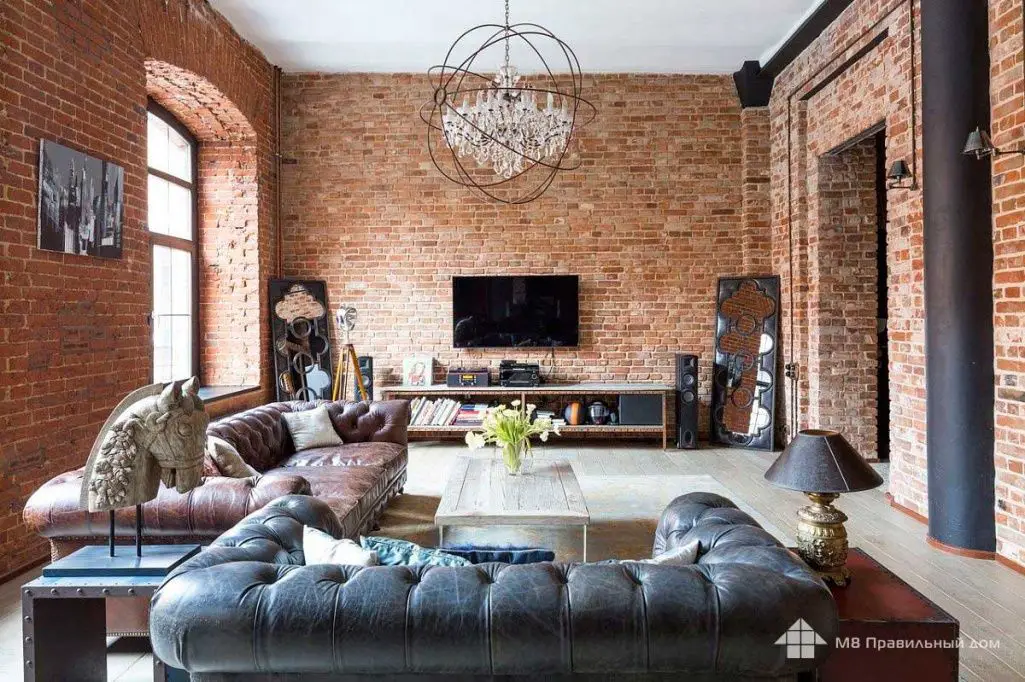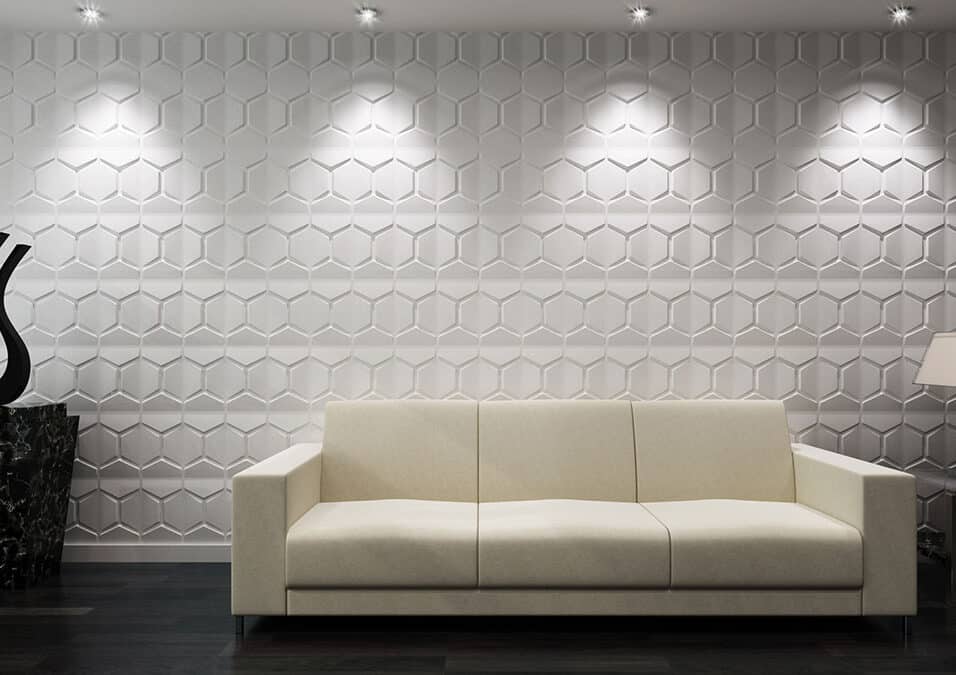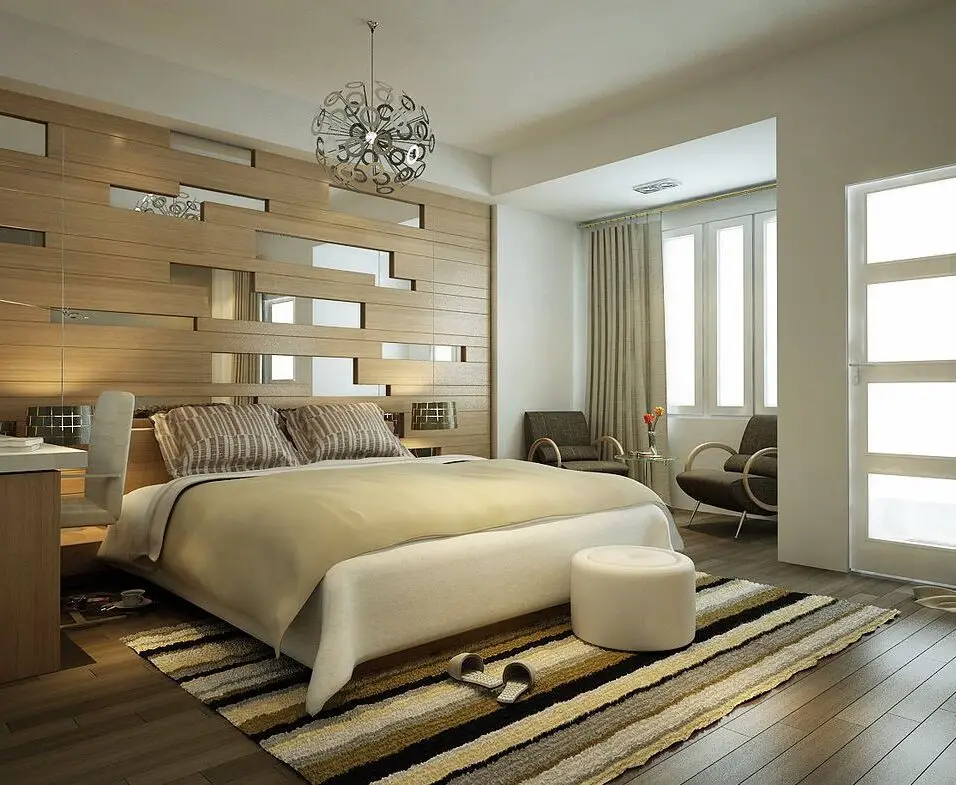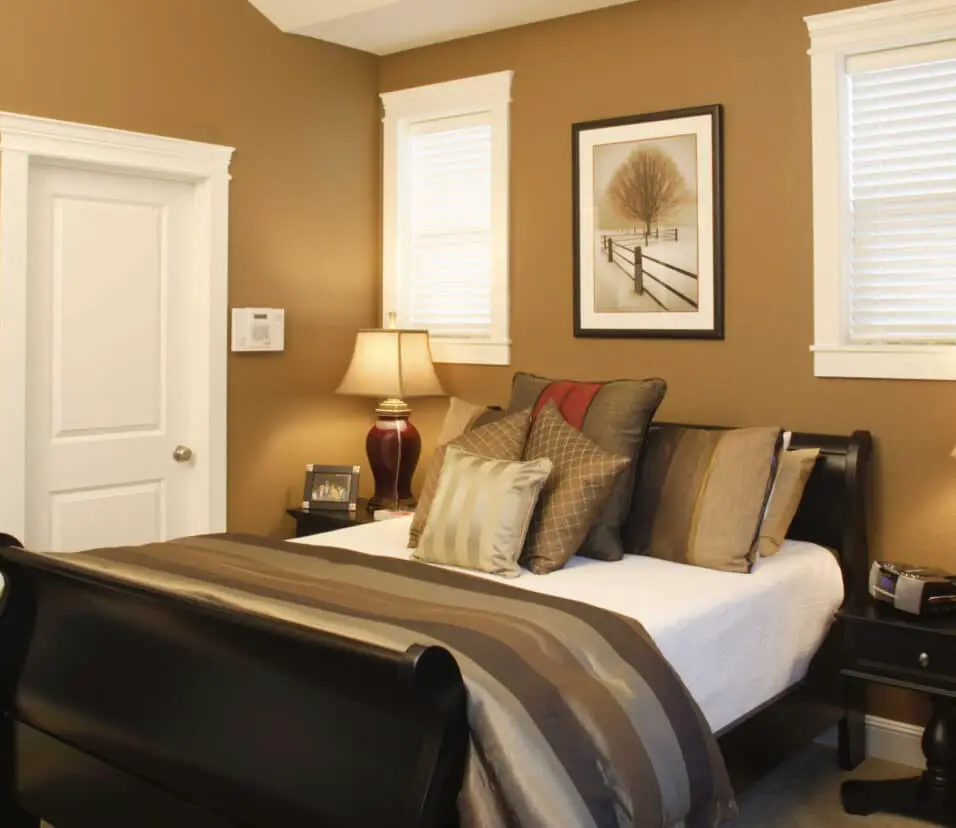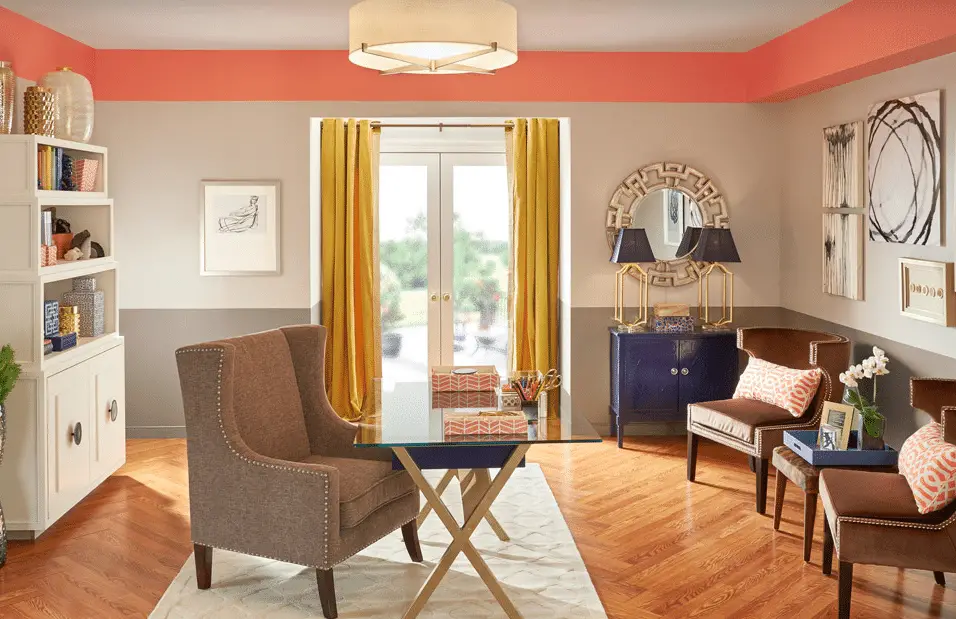How To Paint Brick Wall Interior
Introduction
How To Paint Brick Wall Interior: Painting a brick wall can be a great way to update the look of your interior space. Whether you’re looking to add a pop of color or create a more modern aesthetic, painting brick can completely transform a room. However, it’s important to approach this project with the right techniques and materials to ensure a successful outcome.
Firstly, it’s important to properly prepare the brick surface before painting. This involves cleaning the wall to remove any dirt, dust, or loose mortar. You can use a wire brush or a pressure washer to scrub the surface and ensure a clean canvas for painting. Additionally, it’s important to repair any cracks or damage in the brick before proceeding. This will help to create a smooth and even surface for the paint to adhere to.
Secondly, choosing the right type of paint is crucial for a long-lasting and professional-looking finish. When painting a brick wall, it’s recommended to use a breathable paint that allows moisture to escape. This is because brick is a porous material that can absorb and release moisture. Acrylic latex paint is a popular choice for painting brick as it provides good coverage and durability. It’s also important to consider the color of the paint and how it will complement the overall design of the room.
Lastly, applying the paint correctly is key to achieving a smooth and even finish. Start by applying a primer to the brick, which will help the paint adhere better and provide a more even finish. Once the primer is dry, you can begin applying the paint in thin, even coats. It’s important to allow each coat to dry completely before applying the next one to avoid any streaks or drips.
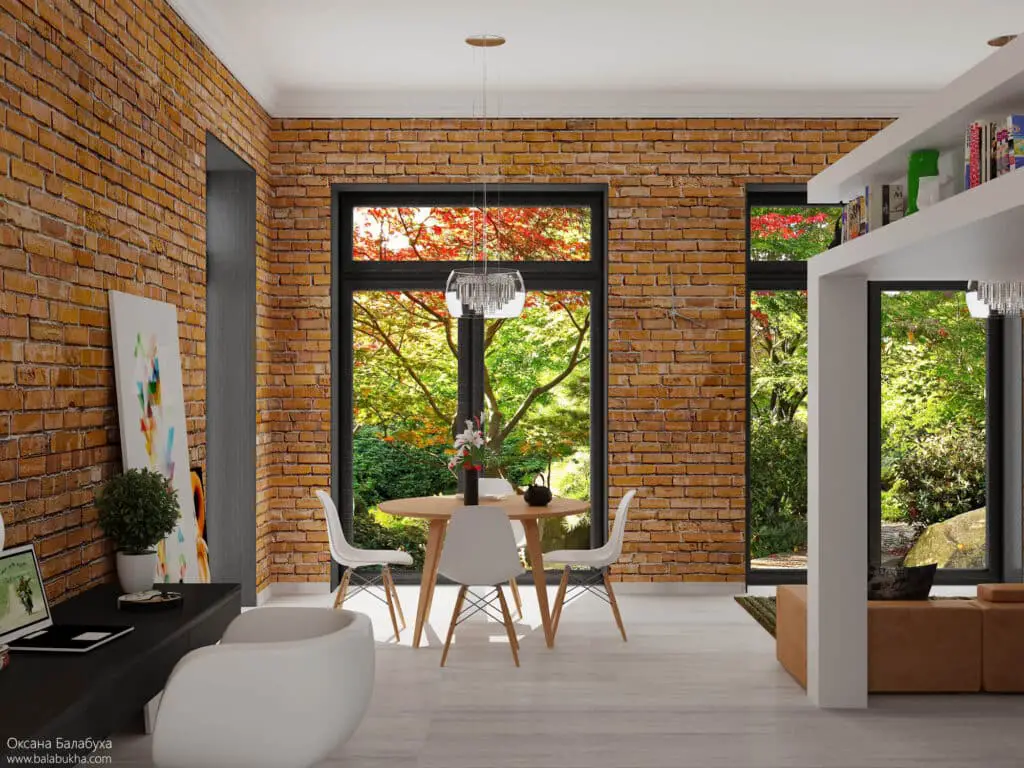
What kind of paint do you use on interior brick?
Painting Your Interior Brick
Use either an elastodynamic paint or a regular acrylic-latex blend for your paint color.
When it comes to painting interior brick, it is important to choose the right type of paint that will adhere well to the surface and provide a long-lasting finish.
Latex paint is a popular choice for painting interior brick due to its ease of use and versatility. It is water-based and dries quickly, making it a convenient option for DIY projects. Latex paint also offers good coverage and is available in a wide range of colors, allowing you to achieve the desired look for your interior brick. However, it is important to note that latex paint may not be as durable as other types of paint, especially in high-traffic areas or areas prone to moisture.
Acrylic paint is another option for painting interior brick. It is similar to latex paint in terms of its water-based formula and quick drying time. Acrylic paint also provides good coverage and is available in a variety of colors. One advantage of acrylic paint is its durability, as it is more resistant to wear and tear compared to latex paint. However, like latex paint, acrylic paint may not be the best choice for areas with high moisture levels.
Epoxy paint is a more specialized option for painting interior brick. However, it can be more challenging to work with compared to latex or acrylic paint, and it may require additional preparation and priming of the brick surface.
Is it okay to paint brick interior?
Painting brick can be an easy way to update the look of any exterior or interior space. While raw red brick is beautiful in many contexts, there are other instances where painting the brick is a good idea, whether as a means of brightening a room or boosting the curb appeal of your home.
Painting brick interiors is a popular trend in interior design, but is it okay to do so? Many homeowners are hesitant to paint brick because they are unsure of the potential consequences. However, with the right preparation and technique, painting brick can be a great way to update the look of your interior space.
One of the main concerns with painting brick is that it can be difficult to reverse the process. This is why it is important to carefully consider your decision before painting brick. If you are unsure about whether you will want to keep the brick painted long-term, it may be best to explore other options for updating your interior.
Preserving Brick Breathability: Choosing Breathable Paint and Proper Surface Preparation for Moisture Mitigation
Another concern with painting brick is that it can affect the brick’s ability to breathe. Brick is a porous material that allows moisture to evaporate, and painting it can potentially trap moisture within the brick. This can lead to issues such as mold and mildew growth. To mitigate this risk, it is important to use a breathable paint specifically designed for brick surfaces. Additionally, it is crucial to properly prepare the brick surface before painting to ensure good adhesion and minimize the risk of moisture-related problems.
Despite these concerns, there are several benefits to painting brick interiors. Painting brick can give your interior space a fresh, modern look and can help to brighten up a room. It can also be a cost-effective way to update the appearance of your home, as painting brick is generally less expensive than other renovation options. Additionally, painting brick can help to cover up any unsightly stains or damage on the surface of the brick.
While there are some potential risks and considerations to keep in mind, painting brick interiors can be a viable option for updating your interior space. By carefully considering your decision, using the right materials and techniques, and properly preparing the brick surface, you can achieve a beautiful and long-lasting result.
What is the easiest way to paint a brick wall?
Painting a brick wall can be a daunting task, especially if you are not familiar with the process. However, with the right tools and techniques, it can be a relatively easy and straightforward project. In this article, we will discuss the easiest way to paint a brick wall.
Preparation is key
Before you begin painting, it is important to properly prepare the brick wall. This includes cleaning the surface to remove any dirt, dust, or debris. You can use a pressure washer or a stiff brush and detergent to scrub the bricks. Once the wall is clean, allow it to dry completely before proceeding.
Choose the right paint
When it comes to painting a brick wall, it is important to choose the right type of paint. This type of paint is durable and will adhere well to the brick. Additionally, consider the color you want to achieve and select a paint that matches your desired outcome.
Prime the surface
Before applying the paint, it is recommended to prime the brick wall. Priming helps to create a smooth and even surface for the paint to adhere to. Apply a coat of masonry primer using a roller or brush, making sure to cover the entire surface. Allow the primer to dry completely before moving on to the next step.
What primer to use on interior brick?
Apply a latex primer to the brick using a brush or roller.
Choose a water-based primer that’s made for brick and masonry so it’s sure to adhere well to the wall. Use a synthetic bristle brush which is great for painting uneven surfaces, or use a roller with a thick nap for a quicker application.
When it comes to painting interior brick, using a primer is essential to ensure a smooth and long-lasting finish. The right primer can help to seal the porous surface of the brick, prevent moisture penetration, and provide a good base for the paint to adhere to. However, with so many options available, it can be overwhelming to choose the right primer for your interior brick.
One of the most commonly recommended primers for interior brick is a masonry primer.
Masonry primers also help to seal the surface, preventing moisture from seeping into the brick and causing damage.
Another option to consider is a high-quality latex primer. Latex primers are versatile and can be used on a variety of surfaces, including interior brick. They are easy to apply, dry quickly, and provide a smooth base for the paint. Look for a latex primer that is specifically formulated for masonry surfaces to ensure the best results.
If you’re dealing with a particularly challenging surface, such as a heavily stained or damaged brick, you may want to consider using a stain-blocking primer. Stain-blocking primers are designed to cover up and block stains, water damage, and other imperfections. They can help to ensure that the paint goes on smoothly and evenly, even over difficult surfaces.
Ultimately, the best primer for your interior brick will depend on the condition of the surface and the type of paint you plan to use. It’s always a good idea to consult with a professional or a knowledgeable paint specialist to determine the best primer for your specific project. They can provide guidance based on the unique characteristics of your interior brick and help you achieve the best possible results.
How many coats of primer on interior brick?
The best way to paint the brick of your house is to prime the surface with one coat of masonry primer, and then follow that with two coats of premium latex paint. Some painting contractors will try and get away with one thick coat. Using only one coat of paint without primer will not cover properly.
When it comes to painting interior brick, applying a coat of primer is essential to ensure a smooth and long-lasting finish. Primer acts as a preparatory layer that helps the paint adhere better to the surface, prevents the brick from absorbing too much paint, and provides a uniform base for the topcoat.
However, the number of coats of primer needed on interior brick can vary depending on several factors.
The condition of the brick: If the brick is in good condition with no major imperfections or stains, a single coat of primer may be sufficient.
The color of the brick: The color of the brick can also influence the number of primer coats required. If the brick is dark or has a strong color, it may require an additional coat or two of primer to prevent the original color from bleeding through the paint. Lighter-colored bricks may require fewer coats of primer.
The type of primer: Different types of primers have different coverage capabilities. Some primers are specifically designed for porous surfaces like brick and may require only one coat, while others may recommend multiple coats for optimal results. It is important to read the manufacturer’s instructions and choose a primer that is suitable for interior brick.
The desired finish: If you are aiming for a completely opaque and even finish, applying multiple coats of primer can help achieve that. Additional coats of primer can help fill in any gaps or unevenness in the brick surface, resulting in a smoother and more professional-looking paint job.
Tailoring Primer Coats for Interior Brick: Project-Specific Considerations and Professional Guidance
In conclusion, the number of coats of primer needed on interior brick can vary depending on the condition of the brick, the color of the brick, the type of primer used, and the desired finish. It is recommended to assess the specific requirements of your project and consult with a professional if needed to determine the appropriate number of primer coats for your interior brick painting project.
Painting a brick wall in the interior of a building requires careful preparation and execution. The first step is to clean the wall thoroughly to remove any dirt, dust, or loose debris. This can be done using a stiff brush or a pressure washer. Once the wall is clean, it is important to repair any cracks or damaged areas using a suitable filler or mortar. This will ensure a smooth and even surface for painting.
After the repairs are complete, it is recommended to apply a primer to the brick wall. This will help the paint adhere better and provide a more durable finish. Once the primer is dry, the actual painting can begin. It is important to choose a high-quality paint that is specifically designed for brick surfaces. This will ensure better coverage and longevity.
When painting the brick wall, it is best to use a roller or a brush with stiff bristles to ensure that the paint gets into all the crevices and pores of the brick. It may be necessary to apply multiple coats of paint to achieve the desired color and finish. Finally, allow the paint to dry completely before touching or moving any furniture or objects near the wall.
What type of paint is recommended for painting a brick wall in the interior?
When it comes to painting a brick wall in the interior of a building, it is important to choose the right type of paint that will adhere well to the surface and provide a long-lasting finish. The recommended paint for painting a brick wall in the interior is masonry paint.
It also provides excellent coverage and can help to hide any imperfections or stains on the brick surface. Additionally, masonry paint is available in a wide range of colors, allowing you to choose the perfect shade to complement your interior design.
Are there any specific tools or materials required for painting a brick wall in the interior?
When it comes to painting a brick wall in the interior of a building, there are a few specific tools and materials that are essential for achieving a successful and long-lasting result. Firstly, you will need a wire brush or a scraper to remove any loose or flaking paint, dirt, or debris from the surface of the brick. This step is crucial as it ensures that the paint adheres properly to the brick and prevents any future peeling or chipping.
Next, you will need a high-quality primer specifically designed for masonry surfaces. This primer helps to seal the porous surface of the brick and provides a smooth and even base for the paint to adhere to. It is important to choose a primer that is compatible with the type of paint you will be using. In terms of tools, you will need a paint roller with a medium nap, a paintbrush for cutting in around edges and corners, and a paint tray.
How long does it typically take for the paint to dry on a brick wall in the interior?
When painting a brick wall in the interior of a building, the drying time of the paint can vary depending on several factors. In general, it can take anywhere from 4 to 8 hours for the paint to dry to the touch.
However, it is important to note that even though the paint may feel dry to the touch, it may still be curing and not fully hardened. This will ensure that the paint has had enough time to fully dry and cure.
Additionally, factors such as humidity and temperature can also impact the drying time. Higher humidity levels can prolong the drying process, while warmer temperatures can help speed it up. It is important to consider these factors and adjust your expectations accordingly when painting a brick wall in the interior.
Are there any special considerations or techniques to keep in mind when painting a brick wall in the interior?
When painting a brick wall in the interior, there are a few special considerations and techniques that you should keep in mind to ensure a successful and long-lasting finish. Firstly, it is important to properly prepare the surface before painting. This includes cleaning the brick wall thoroughly to remove any dirt, dust, or loose mortar. You may need to use a wire brush or pressure washer to achieve a clean surface.
Another important consideration is choosing the right type of paint for the brick wall. It is recommended to use a breathable paint that allows moisture to escape from the brick. This is important because brick is a porous material that can absorb and release moisture. Using a breathable paint will help prevent any moisture-related issues such as peeling or cracking.
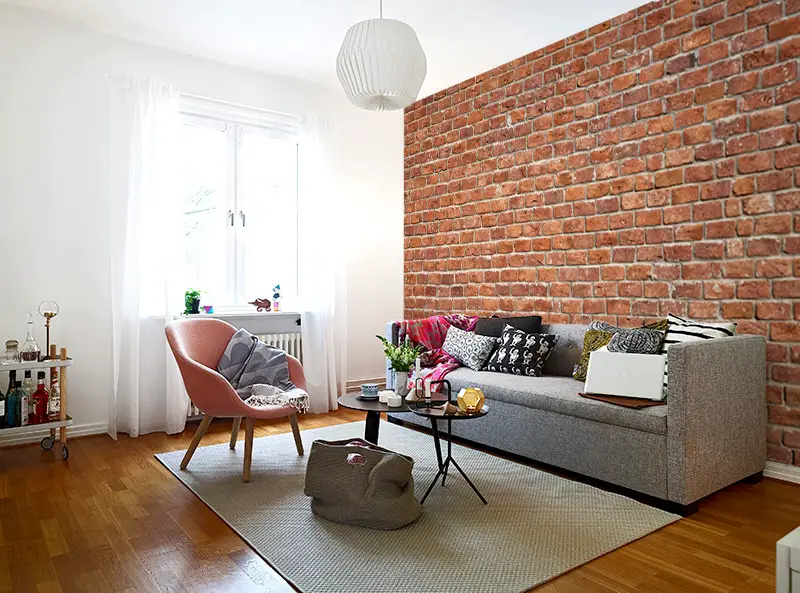
Conclusion
Painting a brick wall interior can be a great way to update the look of a room and add a fresh, modern touch. By following the right steps and using the proper techniques, you can achieve a professional-looking finish that will enhance the overall aesthetic of your space. Whether you want to create a sleek, contemporary vibe or add a pop of color to a traditional setting, painting a brick wall can be a fun and rewarding project.
First and foremost, it is important to properly prepare the brick wall before painting. This includes cleaning the surface thoroughly to remove any dirt, dust, or grease. Additionally, any loose or damaged bricks should be repaired or replaced to ensure a smooth and even surface. Once the wall is clean and in good condition, it is recommended to apply a primer to help the paint adhere better and provide a more even finish.
When it comes to choosing the right paint for a brick wall interior, it is important to consider the type of paint that will work best for your specific needs. Acrylic latex paint is a popular choice as it is durable, easy to clean, and provides a smooth finish. It is also important to choose the right color that will complement the overall design and style of your space.
Finally, the actual painting process involves applying the paint in thin, even coats using a roller or brush. It is important to work in small sections and allow each coat to dry completely before applying the next one. This will help to ensure a smooth and even finish. Once the paint has dried, you can add any additional decorative touches or accents to further enhance the look of your brick wall interior.



